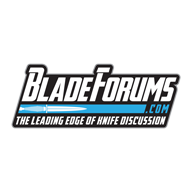I recently made some knives using D2. I found a nearby heat treating workshop, they usually work with SKD11( Japanese's D2) for dies. So I just ask them to heat treat my blades with the dies. The goods are that they charge me much less, and the industrial ovens can maintain temperature more precise and consistent. The bad is that the austenising process is 1886F/1030C, lasts 2 hours, and could not be stop. To my understand, austenising usually takes 15-20 minutes, over soaking the steel will initiate grain growth, making the steel brittle. I have used the knives myself and sharpen them myself, but they seems to be performing quite normal, nothing unusual, but granted, I only use them for knife-stuffs, like cutting, not hard core torture test.
So does soaking D2 at 1886F for 2 hours causes any harm? Thanks.
So does soaking D2 at 1886F for 2 hours causes any harm? Thanks.





